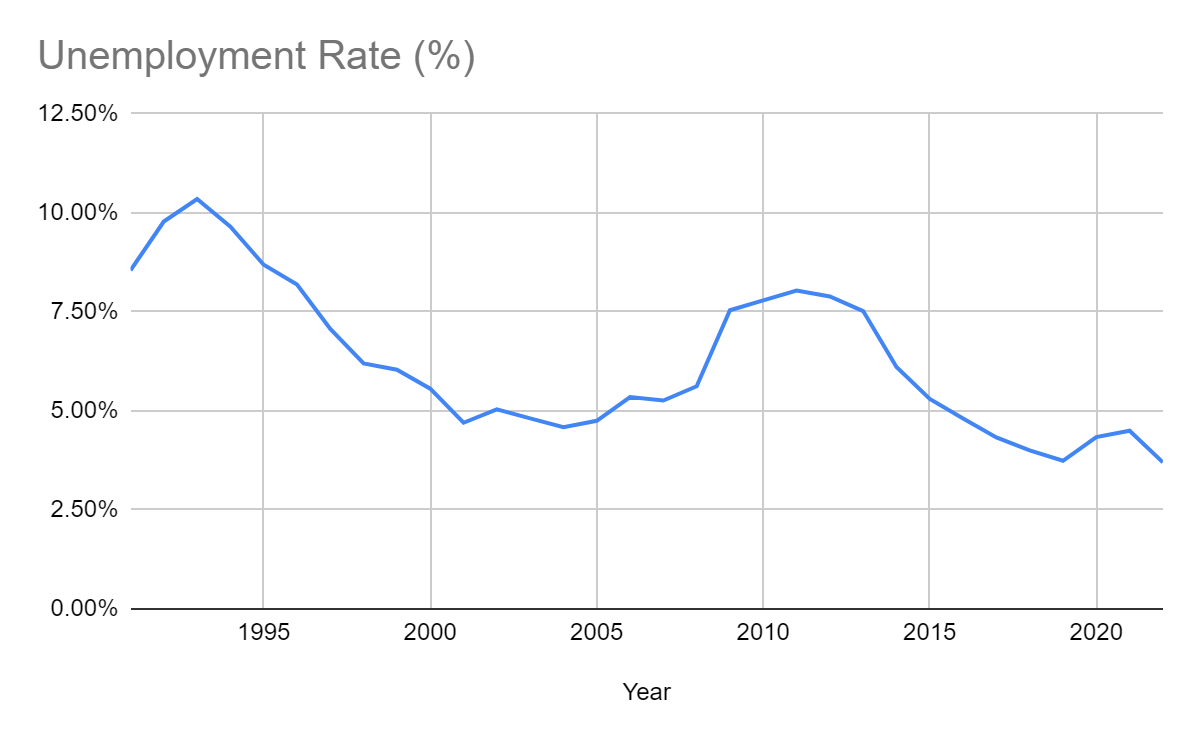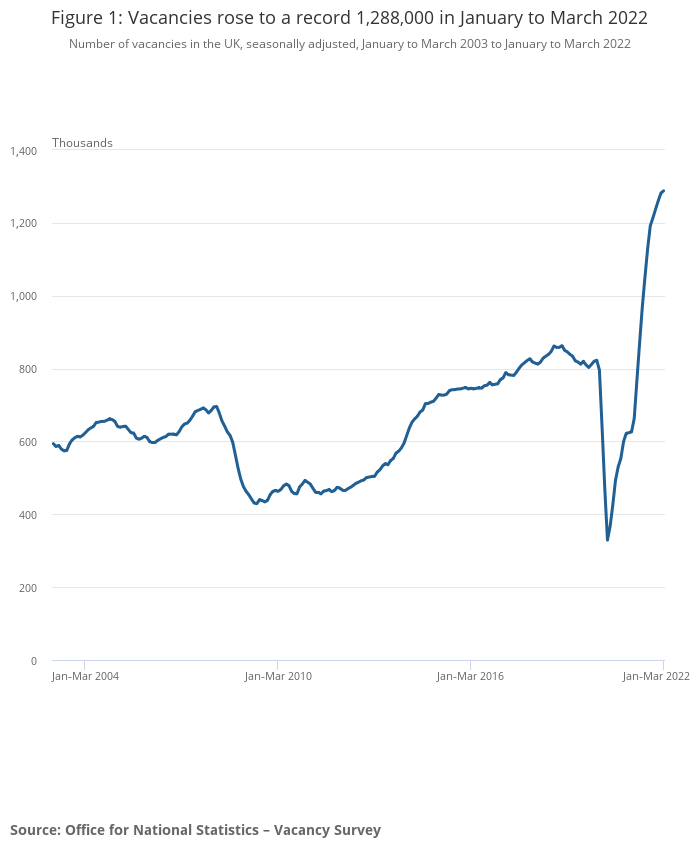An unprecedented event has occurred in the UK. For the first time in recorded history, the number of unfulfilled vacancies in the UK exceeds the number of unemployed people. The national unemployment rate now sits at 3.7%. The lowest level in almost 50 years. The number of vacancies posted has risen to 1.3 million. However, there are some other worrying developments that tamper the positive outlook. Wages could not keep up with the increase in living costs due to among others the stark rise in utility bills. We provide an overview of the current situation on the job market and how the latest developments might impact the British worker and British businesses.
Finding qualified employees will be extremely difficult for business owners
Unemployment rates have not been so low for a very long time. Below we see an overview of the development of unemployment levels over time. As we can see in the graph, the employment rate has been decreasing to the current level in the last 30 years. Actually, the current level of unemployment is the lowest it has been in almost 50 years.

For the number of vacancies though, especially after the recovery of the covid-19 pandemic, the figure is exactly the opposite as we can see below.

These 2 opposite trends have severe consequences for employers and business owners. Finding qualified people that stay long term is very difficult. With companies spending loads of resources and time before being able to find personnel that is suitable for the vacancy. And with a new trend of job hopping by people to see their salary rise at new opportunities also hurts businesses. It is increasingly common for employees to leave a job after only a few months for a new opportunity and take advantage of the higher pay at the new job to battle the rising living costs.
Rise in living costs outpace wage increases
A worrying sign for employees is the mismatch between rising living costs and rising wages. Wages rose by 4.2% between January and March 2022. However, this is quite below the 7.0% increase of living costs in the same period. Especially the energy crisis and the consequences of the Ukraine war have hit hard on energy prices and have seen electricity and gas bills rising starkly. An even more worrisome development is the discrepancy between the public and private sector in terms of pay rises. Pay in the financial and business sectors rose by a staggering 10% whereas the public sector only saw a 1.2% increase in wages. On average, when adjusting for rising prices, real earnings have dropped 1.2% on average in the last period. Which is the largest drop in 9 years.
What is the outlook for employees and employers the coming months?
The Ukraine war could see unemployment rates start to grow again later in the year. The employment rates always lag behind economic growth, and the war will have negative consequences on the economy. Reducing demand for jobs and therefore increasing unemployment rates potentially.
Also Read:
- 5 Trends Shaping Mergers And Acquisitions in Indian Aviation Industry
- Justice on Trial: Money, Power, and the Erosion of Indian Judicial Integrity
- Vi launches 5G in Bengaluru
- Students’ Dream of Foreign Education Will Now Be Fulfilled in India – CM Devendra Fadnavis
- Kumar Mangalam Birla Receives Global Leadership Award from USISPF
- Top 5 Smart Investments to Consider in Next 5 Years

























